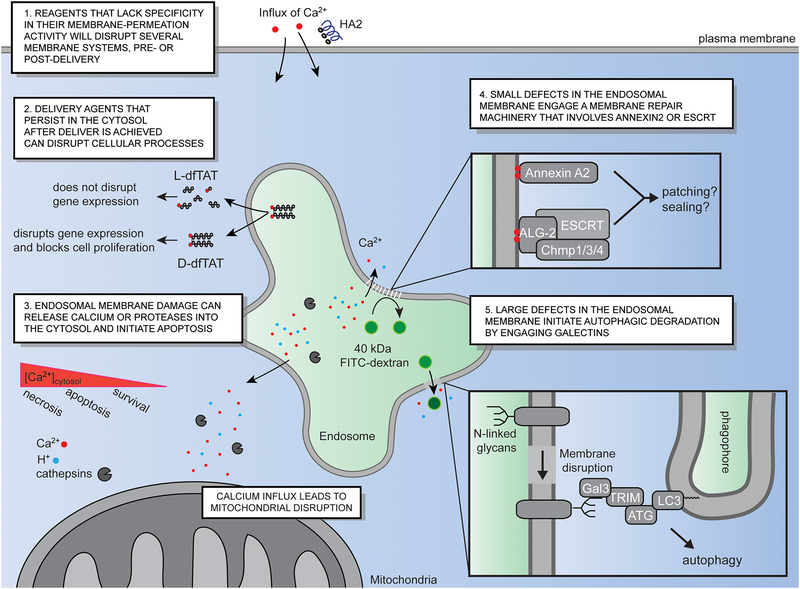Figure 3.
Delivery agents trigger various intracellular responses, related or unrelated to their endosomal escape activity. (1) Delivery agents that display low membrane selectivity may promote endosomal leakage while disrupting other cellular membranes. In particular, they may disrupt the plasma membrane of cells before cytosolic delivery is achieved, and that of intracellular organelles after successful endosomal escape. (2) Non-degradable reagents, such as D-dfTAT, exert deleterious effects on cells that its degradable counterpart dfTAT does not elicit. In particular, D-dfTAT inhibits cell proliferation and alters gene expression. This is independent of endosomal escape as both dfTAT and D-dfTAT mediate the leakage of late endosomal membranes with equivalent efficiencies. (3) Endosomal membrane disruption can lead to the release of luminal calcium and cathepsins into the cytosol of cells. This can in turn trigger apoptotic pathways. In the case of PCI, if endosomal escape is rapid, the rapid burst of calcium released triggers simultaneous mitochondrial membrane permeabilization necrosis. 4) Small membrane defects, that is, defects that cause the release of small molecules such as calcium but not of large species such as a 40 kDa Dextran, initiate the recruitment of annexin 2A and of the ESCRT machinery. This then initiates membrane repair, as detected by the rescue of endosomal acidification and function. (5) Endosomes exposed to large membrane disruptions, that is, disruptions that may accommodate large cargos such as a 40 kDa Dextran, are targeted for degradation by autophagy. In particular, upon membrane disruption, luminal N-linked glycans become exposed and accessible to intracellular lectins such galectin-3. This triggers the assembly of autophagy machinery bound to a phagophore, eventually leading to the engulfment and degradation of the damaged organelles.

